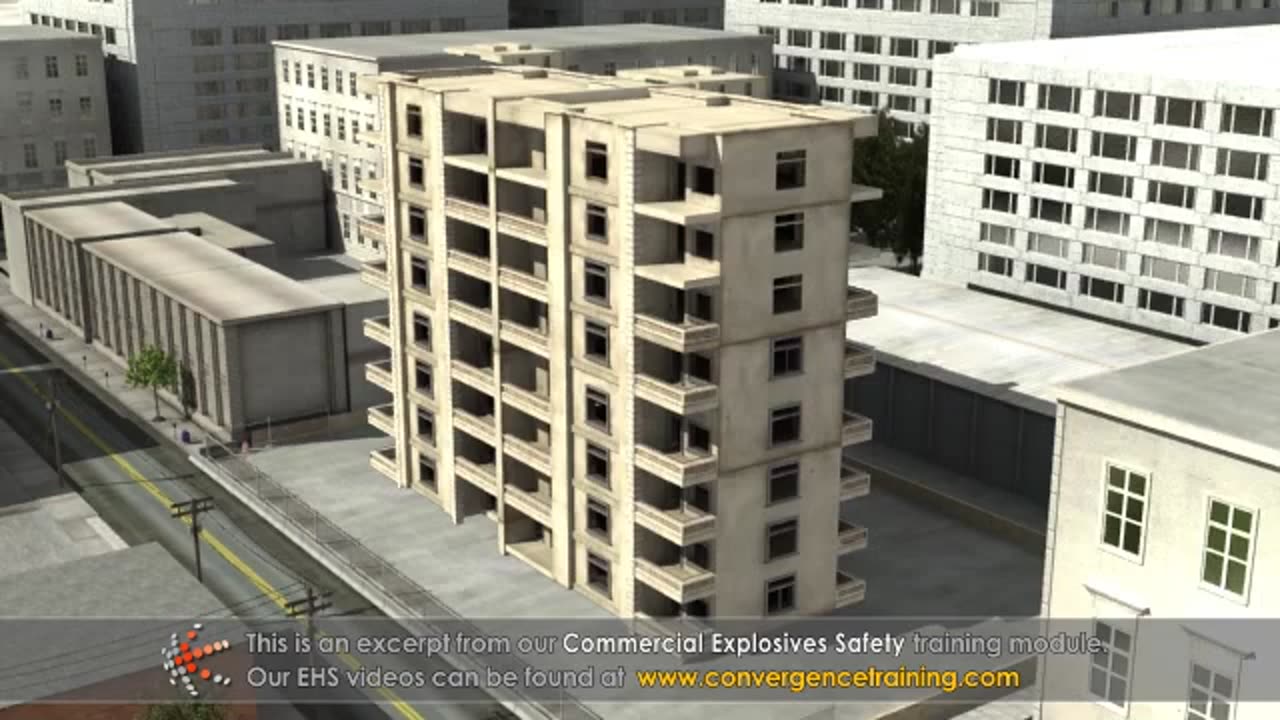Premium Only Content

Commercial Explosives Safety Training
**Commercial Explosives Safety Training** is critical for industries that use explosives, such as mining, construction, demolition, and quarrying. Proper training ensures worker safety, regulatory compliance, and the prevention of accidents caused by improper handling or use of explosives. Below is a comprehensive outline for **Commercial Explosives Safety Training**:
---
## **1. Introduction to Explosives Safety**
- **What Are Commercial Explosives?**
- Common types: dynamite, ammonium nitrate/fuel oil (ANFO), blasting caps, and detonating cords.
- Purpose: Used for controlled blasting in industries like mining, construction, and quarrying.
- **Why Safety Is Important?**
- Prevent accidents, injuries, and fatalities.
- Protect workers, equipment, and the environment.
- **Statistics and Incidents**:
- Real-life examples of accidents caused by improper handling or misuse.
---
## **2. Regulatory and Legal Requirements**
- **OSHA Standards** (29 CFR 1910.109 and 1926 Subpart U):
- Storage, transportation, and use of explosives.
- **ATF Regulations**:
- Licensing, permits, and storage requirements.
- **NFPA Guidelines**:
- Explosives safety and fire prevention.
- **Local and State Regulations**:
- Additional requirements specific to the region.
---
## **3. Types of Explosives and Hazards**
- **Explosive Categories**:
- High explosives: Dynamite, C4.
- Low explosives: Black powder.
- Blasting agents: ANFO.
- **Hazards**:
- Shockwaves, heat, and debris.
- Misfires or unintended detonation.
- Static electricity or spark ignition.
---
## **4. Explosives Storage and Handling**
- **Storage Guidelines**:
- Secure magazines in compliance with ATF regulations.
- Keep storage areas dry, ventilated, and away from ignition sources.
- Post warning signs and limit access to authorized personnel only.
- **Handling Precautions**:
- Avoid rough handling, dropping, or friction.
- Use anti-static tools and clothing.
- **Separation of Materials**:
- Store detonators separately from explosive materials.
---
## **5. Transportation Safety**
- **Vehicle Requirements**:
- Use vehicles approved for transporting explosives.
- Secure the load to prevent movement.
- **Labeling and Documentation**:
- Clearly mark vehicles with "Explosives" signs.
- Carry permits and shipping papers.
- **Driver Training**:
- Drivers must be trained in handling and emergency response.
---
## **6. Safe Use of Explosives**
- **Pre-Blast Planning**:
- Conduct site surveys and risk assessments.
- Develop a blasting plan and obtain necessary permits.
- Ensure the area is clear of unauthorized personnel.
- **Loading Procedures**:
- Follow approved loading techniques.
- Avoid overloading or underloading blast holes.
- **Initiation Systems**:
- Use only approved detonators and ensure proper connections.
- Double-check all wiring and circuits.
- **Blasting Operations**:
- Clear the blast area and establish a safety perimeter.
- Use warning signals to notify workers.
- Follow a strict firing sequence.
---
## **7. Misfire Management**
- **Recognizing Misfires**:
- Signs of a misfire (e.g., partial detonation, failure to detonate).
- **Responding to Misfires**:
- Wait a designated time before approaching the blast site.
- Notify the supervisor and follow established procedures.
- **Disposal of Misfires**:
- Handle according to regulatory guidelines and company protocols.
---
## **8. Personal Protective Equipment (PPE)**
- Recommended PPE for explosives work:
- Safety goggles and face shields.
- Anti-static gloves and boots.
- Flame-resistant clothing (if required).
---
## **9. Emergency Response Planning**
- **Incident Response**:
- Steps to take in case of accidental detonation, fire, or injury.
- Emergency evacuation procedures.
- **First Aid for Blast Injuries**:
- Treating burns, lacerations, or concussions.
- Ensure immediate access to medical care.
- **Communication**:
- Establish emergency contact protocols.
- Equip teams with two-way radios or other communication tools.
---
## **10. Training and Drills**
- **Practical Exercises**:
- Hands-on training in loading, wiring, and initiating explosives.
- Simulated emergency scenarios for evacuation and misfire handling.
- **Regular Refresher Training**:
- Update workers on new safety techniques and regulations.
- **Competency Assessments**:
- Test knowledge and skills to ensure readiness.
---
## **11. Environmental Considerations**
- **Minimizing Impact**:
- Control blast vibrations, noise, and dust.
- Prevent contamination of water sources.
- **Post-Blast Inspections**:
- Check for undetonated explosives and debris.
---
### **Key Takeaways**
- **Plan and prepare** thoroughly for all blasting activities.
- **Follow regulations** for storage, handling, and transportation.
- **Communicate clearly** and establish a culture of safety.
- **Respond promptly** and effectively to misfires and emergencies.
Would you like additional materials, such as checklists, step-by-step guides, or visual aids for this training?
-
 20:24
20:24
HSESafetyInformation
2 months agoKABULI PULAO RECIPE - Original 40+ KG Afghani Meat Pulau Prepared - Street Food Qabili Plav Recipe_2
28 -
 LIVE
LIVE
Candace Show Podcast
1 hour agoFarewell Show: LIVE With Ian Carroll | Candace Ep 183
4,877 watching -
 33:37
33:37
Kimberly Guilfoyle
4 hours agoThe First 100 Days: Interview with Bienvenido President Abraham Enriquez | Ep217
7.2K6 -
 DVR
DVR
Stephen Gardner
59 minutes ago🔥BOOM! Trump's NEW EO just changed EVERYTHING!!
611 -
 LIVE
LIVE
Dr Disrespect
5 hours ago🔴LIVE - DR DISRESPECT - TRIPLE THREAT CHALLENGE - WZ, PUBG, FORTNITE
4,632 watching -
 2:12:54
2:12:54
The Quartering
4 hours agoAdam Schiff IN TROUBLE, Woke Lefties MELTDOWN Over Temu, Karmelo Anthony Family LIES, & Much More
103K33 -
 1:12:00
1:12:00
RiftTV/Slightly Offensive
2 hours ago $3.46 earnedWho KILLED Virginia Giuffre? Only 11% of Black Chicago Students Can READ? | The Rift Report
17.7K17 -
 LIVE
LIVE
The HotSeat
1 hour agoDeporting Illegals, Arresting Judges, and Saving Women's Sports — More, Please!
686 watching -
 25:18
25:18
Scary Mysteries
3 hours agoSTRANGE & SCARY Mysteries Of The Month - April 2025
6.85K4 -
 1:35:24
1:35:24
Russell Brand
5 hours agoEpstein’s Most Famous Accuser Found DEAD—Was She Silenced? – SF573
144K35